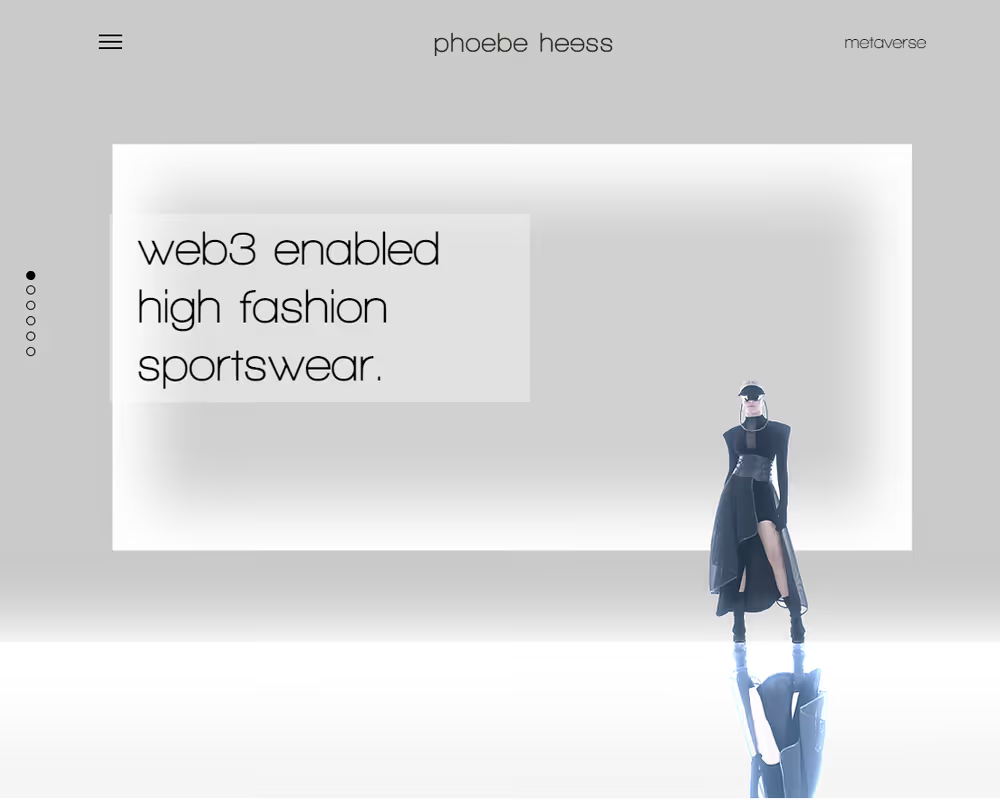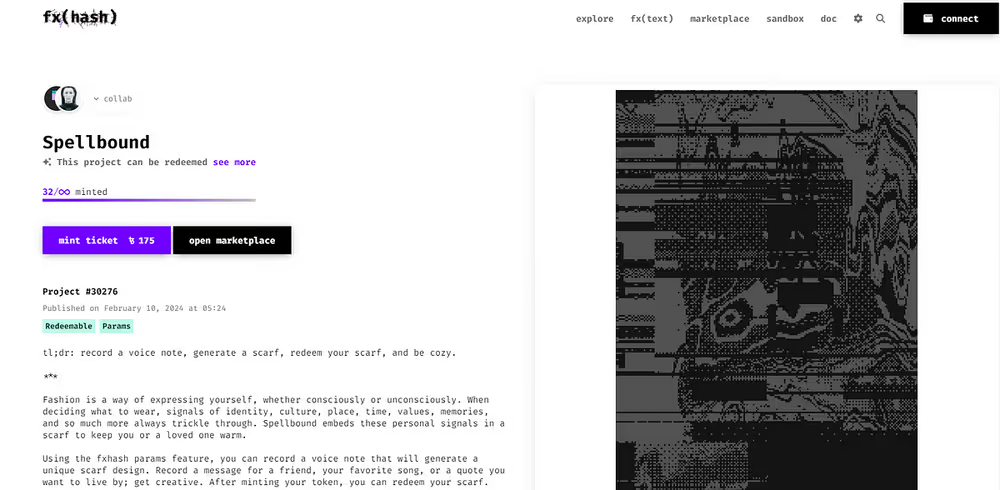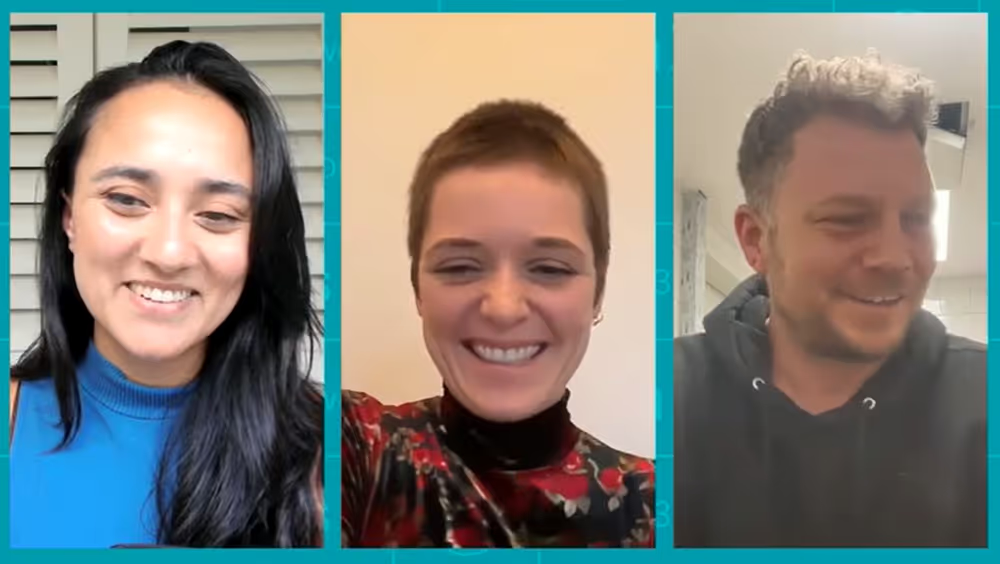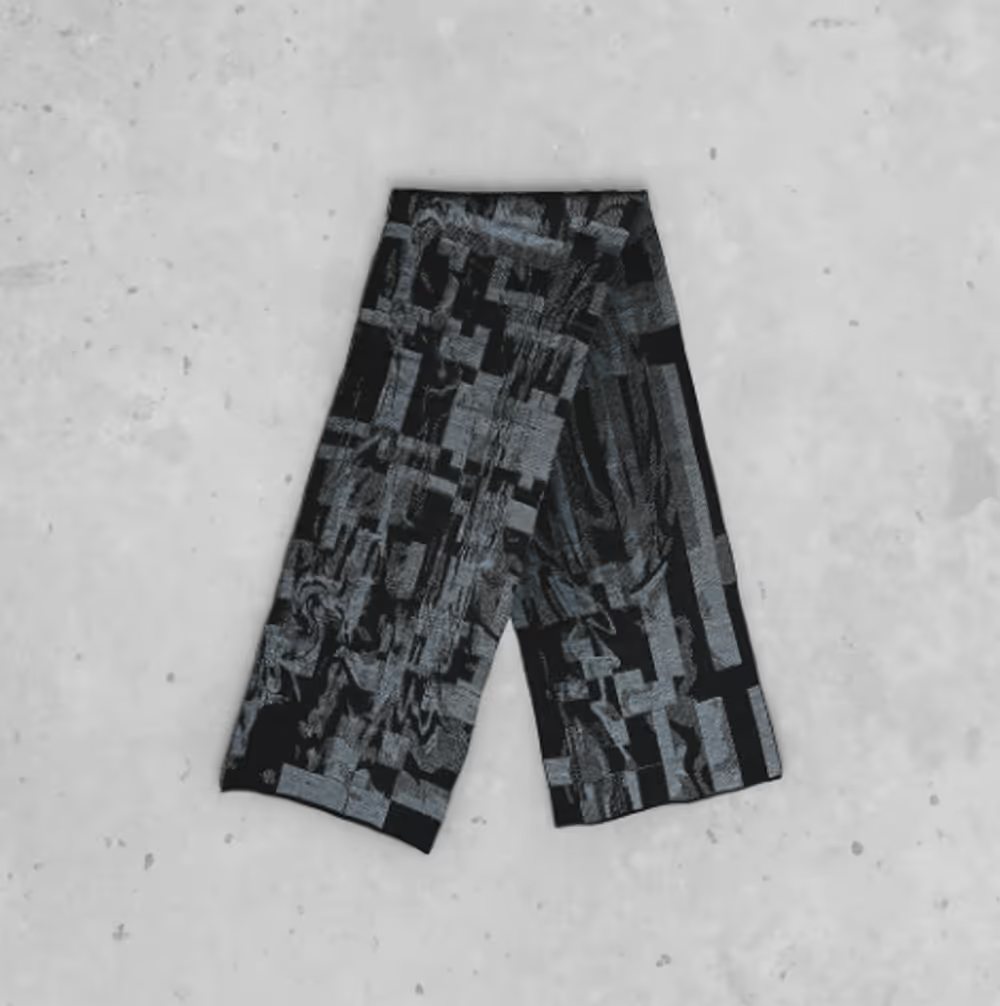Spellbound: Bringing Tezos Into The World Of Fashion
Spellbound's Anna Lucia and Gabriel Maria Platt discuss their intriguing new Tezos-powered generative fashion project
8 minute read

We currently occupy a very interesting moment when it comes to the intersection between artificial intelligence, Web 3.0, and what many of us still regard as “the real world”. With the enormous potential of AI now evolving rapidly and on full display across the digital realm, this headline-grabbing technological moment is raising very interesting questions about what part AI might realistically play in our daily lives moving forward.
Most already understand that artificial intelligence already touches almost everything we watch, read, and look at online. Now, with the launch of Spellbound — one of the first generative fashion collections launched on Tezos, Anna Lucia and Gabriel Maria Platt have added a new wrinkle into the mix, inviting generative artificial intelligence to touch what we wear.
Born out of a mutual fascination with the emerging technologies involved, the Spellbound project represents an intriguing Tezos use case — one that holds the potential to introduce an entirely new audience to what the Tezos ecosystem has to offer.
Spellbound’s creators have now embarked on a unique Web 3.0 adventure that promises to offer a fleeting glimpse into how generative AI and blockchain technology might bridge the gap between the digital and physical world in earnest.
And, for at least one of the creative minds behind Spellbound, the beginning of this fascinating journey is rooted almost entirely in random happenstance…
“I stumbled upon generative art about 5 years ago. I didn’t really know much about it at the time. I didn’t know that there was already a huge community — this was pre-NFTs. I discovered that there was this beautiful history of computer art, and it was something that I stumbled upon very organically.
I found that it really matched my way of thinking and the way that I love to express myself. I see it really as drawing with code — a way for me to take something that I’m thinking about in my head and be able to express that visually. The medium of code just comes very naturally to me.
As I was developing this, I went to social media and shared my work, and I discovered this beautiful online community that was out there made up of other generative artists. One thing led to another, NFTs came up, and I started experimenting with them. Now, here we are today.”
— Anna Lucia
For his part, Gabriel Maria Platt has been probing the boundaries between generative art and fashion for some time now. As co-founder of groundbreaking “Web 3.0 enabled high fashion sportswear” brand Phoebe Heess, Gabriel has played a key role in uniting the worlds of fashion and Web 3.0 with outstanding consumer-facing offerings, effective branding, and networking within the global fashion community…
“I have a marketing background. I used to be the Head of Digital for Vice Magazine in Berlin. Then I went into business consulting — digital innovation consulting, to be exact. Then I met Phoebe, who is the co-founder together with me and is the designer of course. She was working for Adidas and designing for Stella McCartney at that time, we thought that her expertise combined with mine would make an interesting fashion brand — a kind that didn’t exist at that moment.
At Phoebe Heess, we do very innovative stuff, and everything we do is sportswear-oriented. It’s all very functional. I was immediately fascinated by Web 3.0 because it presented the opportunity to put functions on functions and then another function on top of that. It gets really really interesting. Everything we do has a reason. I’m a very curious person, and I like to explore new innovative ways of doing things.”
— Gabriel Maria Platt

While Spellbound is by no means the first-ever human/generative AI fashion collaboration, it has introduced a couple of elements that make it a unique and interesting case study for this emerging fashion design medium. Initially, Spellbound will produce a run of hyper-personalized, AI-generated scarves.
The resulting scarves will include direct generative art input from each unique user in the form of a short voice not specifying exactly what the user would like the theme of their scarf to be. The Spellbound team’s decision to manage UI in this way was a deliberate one, founded on a desire to ensure that each user’s contribution played a key role in the generative art process…
“The initial idea for the project was ‘of course we can generate an artwork and then produce it, but wouldn’t it be much cooler to use the possibilities of generative art and take a specific input that has a more human angle?’ Generative art, in itself, is very technical. That’s where the idea came from to use voice.”
— Gabriel Maria Platt
However, this hyper-personalized approach was not one that the Spellbound team decided to take strictly with creative collaboration in mind. Gabriel and Anna’s shared ethos around sustainability and environmental concerns also played a key part in it…
“When Gabriel started talking to me about this project, a lot of the things that he spoke about really resonated with me in terms of fashion. Even though it’s something that I really enjoy, I’m not a big fan of ‘fast fashion’. I’m very intentional about the clothes that I wear and where I buy them. That’s a very core part of this project. I think that’s what really drew me towards working with Gabriel on this.
— Anna Lucia

Powered by Tezos and minted on fx(hash) platform/marketplace, Spellbound serves as a fascinating test ground for similar types of projects moving forward. These types of collaborative efforts between fashion brands and existing tools/platforms within the Tezos ecosystem present an interesting opportunity to leverage Tezos’ cutting-edge technology and demonstrate the beauty of Tezos and what it can offer…
“We built it on the fx(hash) params back end. fx(hash) offers the possibility to set up a params project. As a generative artist, you choose a few parameters that you can interact with in the system — for example, you can choose the color palette or you can choose very minimal or very maximalist. What we did in this project is, we have a user interface where you can record a short voice note inside the token. That recording actually becomes the parameters of your project. That’s what partially feeds the design of your scarf. Once you mint your token, the user interface disappears and then you are able to have your token and you can use the redeems function — also leveraging fx(hash) — to actually get your scarf made and sent to you.”
— Anna Lucia
While it remains to be seen exactly what kind of appetite fashion consumers have for these types of generative art — fashion collaborations, early indications are that there is a fair amount of interest, which is something Gabriel and Anna spoke about during their [recent appearance on TezTalks Radio]

“I’ve been very excited about how people have responded to Spellbound. We’ve already been working on this project for months, so for me, the novelty of it had worn off. Now that we’re starting to show it to the world and tell people about it, people are like ‘Wow, this is really cool how you’ve leveraged these tools that were already there.’
Params have already been there, redeemables on fx(hash) have already been there, and the knitting machine we’re using has already been there. We’ve been able to bring all of these things together to bring something new. People have responded to that very positively.”
— Anna Lucia
Even better, with this initial run now out in the wild and generating interest, the Spellbound team has already begun looking ahead to what comes next…
“The seed for the project is planted now. In the future, it is possible with these machines to produce other pieces as well. It could be socks, it could be hats… whatever, we’ll see. There are so many things we can do in the future, and I’m already looking forward to thinking about it.”
— Gabriel Maria Platt

The question of whether or not artificial intelligence will play a significant role in the world’s collective lives moving forward has already been asked and answered. As for exactly which parts of our lives it will impact, and what part Tezos and its thriving ecosystem will play in making it happen, projects like Spellbound present us with an amazing peek into what lies ahead. Better still, it’s not too late to get involved, mint your token, get your scarf, and throw your support behind this cool project and the innovators behind it! You can get yours here.